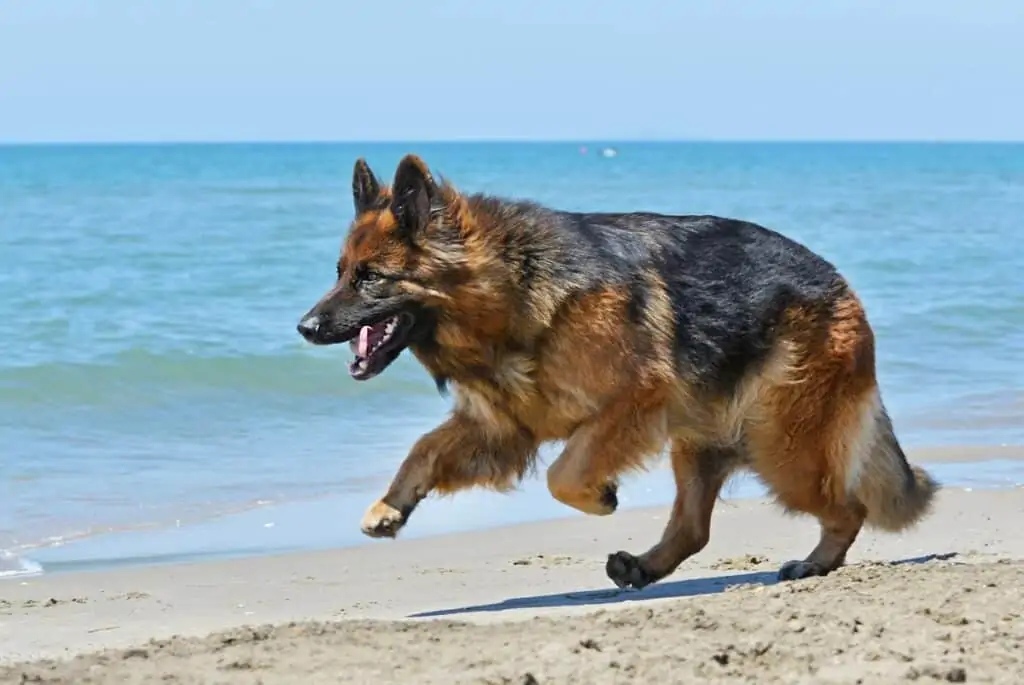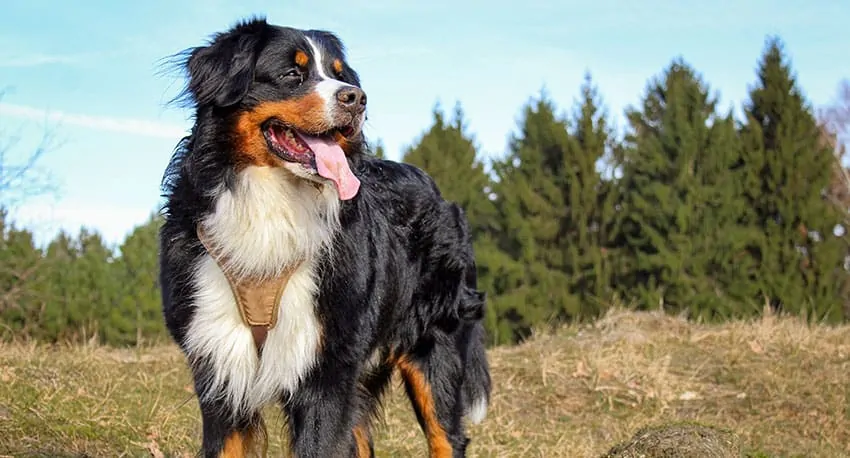Do Dogs Eat Other Dogs? [Is Dog Cannibalism Real?]
Is dog cannibalism a thing? Do dogs eat other dogs?

The Cambridge Dictionary defines cannibalism as either the practice of a human who eats another human or of an animal eating another animal of its same species. When it comes to dogs, there are cases in which dogs have eaten other dogs, though this phenomenon is relatively rare.
Dogs Eating Other Dogs: But How Rare Is It?
In a report studying the cannibalistic propensities of dogs, researchers found that only two out of every eleven dogs would consistently refuse to eat the flesh of another dog. Five of the eleven dogs accepted the flesh all the time.
Now, we have to keep in mind with this study that it’s very likely the dogs didn’t know one another, and that the unidentifiable flesh was merely offered to the dogs in the trial.
The most common situation of doggy cannibalism in our homes may occur between a mother and her pup. It’s a tragic story, akin to a Greek tragedy, imagining a mother dog eating one of her pups. Indeed, it is just at the moment of happiness, when her struggles are over, that this great sadness enters the home.
Below, we’ll learn a little bit about why mother dogs might eat their young and how to prevent it.

Why Might A Mother Dog Eat Her Young?
According to a 2019 study published in International Journal of Veterinary Science and Medicine There are a number of reasons a mother dog might eat her young, ranging from natural reasons to abnormal and treatable reasons.
We’ll cover all these reasons today.
Normal Reasons A Mother Dog Might Eat Her Young
Though to our civilized ears cannibalism always sounds horrible, according to veterinary authorities there are situations in which cronyism, or maternal cannibalism, would be expected in most dams.
A dam might resort to cannibalism in order to reduce the litter size. When there are not enough resources, a dam will assess this and use cannibalism as a strategy that saves the rest of her offspring.
The mother may also cannibalize defective pups or use cannibalism to balance the ratio of males to females from her offspring.
If environmental conditions are sufficiently bad, too, a dam may commit cronyism.
Abnormal Reasons A Mother Dog Might Eat Her Young
There are plenty of abnormal, rare, and potentially treatable reasons a mother might kill and phagocytize her young.
An Accident By Inexperienced Mothers
Primiparous (first-time) mothers may be nervous and, due to inexperience, may pull too much of the umbilical cord of their young as they’re trying to remove it. This tear can result in evisceration (that is, the disembowelment of her young) or cannibalism.
Researchers found, however, that while this accident can occur in a bitch’s first litter, such accidents are extremely uncommon in subsequent litters.

Chemical Imbalance
A chemical imbalance may result in altered maternal characteristics in dogs. Low oxytocin levels and too few blood lipids are hypothesized to play a part in this altered behavior.
Researchers conducted a study of thirty dams of the same breed in which 15 had a history of maternal cannibalism, and 15 had no history of maternal cannibalism. Researchers found that low oxytocin and too few blood lipids were indeed detected in the 15 cannibal mothers.
The conclusion of this research suggests that a minimum amount of oxytocin is required in female dogs to instill maternal behavior in their treatment of their litter. More information about oxytocin levels in a healthy dog may be found here.
Genetics
It is very rare for dams to be very aggressive to their young; if it does occur, however, it’s most likely to occur on a dam’s first litter. However, there have been known cases in which a dam is habitually aggressive and cannibalistic towards her young. This mother is believed to have a genetic trait that predisposes her to cronyism.
Extreme Pain
If a mother is in extreme pain, she may resort to cannibalism. The most common kind of strong pain experienced by post-partum dams is known as mastitis.
Mastitis is a condition that humans can experience as well as dogs, and it merely refers to a hot and painful inflammation of the breast tissue. It’s most common with breastfeeding mammals, though non-breastfeeding females and even males can experience mastitis.
In female dogs, mastitis can lead a mother to refuse to eat, to reject her young, or even to cannibalize her offspring.
Eclampsia
Eclampsia is a condition experienced by lactating dogs in which blood calcium levels drop dangerously below normal. Cannibalism can result from eclampsia.
Eclampsia is treated by immediate intravenous calcium injections. You should consult a vet for more information if you worry about this for your expecting female dog.

Cannibalism In Dogs: How To Prevent It?
As any dog owner will tell you, every dog is different. Dogs can have neurotic personalities and can behave unpredictably, even if science says this behavior is extremely rare. There are situations in which cannibalism in dogs may occur that could not be foreseen or expected.
However, especially when we consider cannibalism in dams, we see that there are many preventable factors that will minimize the possibility of cronyism.
A Safe, Spacious, Cleanly Environment
If dogs feel overcrowded or face severe pain due to infection or illness, cannibalism is much more likely. All litters should be whelped in safe, spacious, and hygienic environments.

Monitor Oxytocin and Blood Calcium Levels In Postpartum Dogs
Above we saw that low oxytocin and blood calcium can be related to cannibalism. Monitoring these levels can help avoid phagocytosis.
Research The History Of Both Stud And Bitch
We saw that genetics can play a part in maternal cannibalism. Be sure to research cannibalistic tendencies in parents and grandparents before attempting to sire a litter.
Conclusion
In Cannibalism A Perfectly Natural History, Bill Schutt lays out how it’s quite common in the animal kingdom for an organism to consume a member of its same species.
For dogs, though, a mother eating her child or two pups eating one another is unusual and likely due to living conditions or other external circumstances.